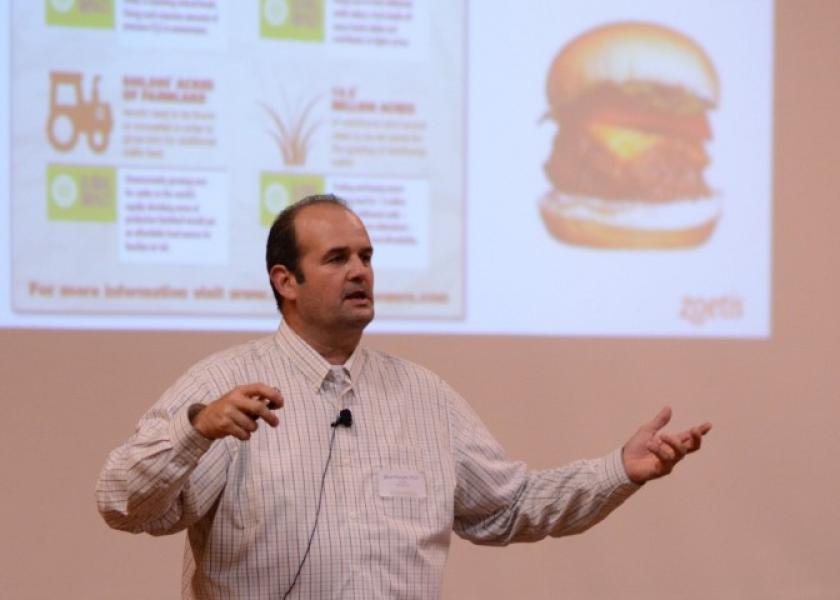Tell How and Why Beef is Better

Technology, with a dose of explanation, is just what the expert ordered.
As a meat scientist for Zoetis, Brad Morgan sees a lot of industry innovations first hand. Interacting with the public, including fellow employees at the animal health company and his own family, he sees the need for education.
In the most recent National Beef Quality Audit (NBQA) nearly every segment—from feeders and packers to retailers and allied industry—named lack of transparency among the top three weaknesses of the U.S. cattle industry.
"Do consumers like technology?" he asked. "Not really. Everyone likes $2 gas and a dollar loaf of bread though."
The statistics are familiar. By 2050 we’re going to have to produce twice as much food and 70% of that will need to come from gains in efficiency due to technology.
Morgan explained it’s usually a lack of knowledge of technology, not the practice itself that causes consumer concern. "I remember asking my wife one time, ‘Would you feed our boys beef that had been subjected to organic acid to kill E. coli?’" In that entire sentence, one word stuck out to his partner.
"When she hears ‘acid,’ what does she think about? That battery in your car," he said. Holes in clothes lead to visions of holes in a stomach.
When he asked the same question about a 2% vinegar mixture on that beef, his wife was okay with that.
"This was a defining moment for me. I asked, ‘You know that vinegar is an organic acid?’"
"No. I didn’t know that," came the reply.
"We really have to explain to people why we want to use technology," he said.
For example, in the packing plant it takes 400 gallons of water per beef carcass, which might sound like a lot to the average consumer.
"Ninety percent of it is for sanitation and cleanup," Morgan said. "And 100% of what goes in also comes out. But a lot of times because of the water treatment facilities that we have at these packing plants, most of the water is cleaner coming out of the plant than it is from the municipal water supply coming into the plant. We spend a lot of money treating water at packing plants."
Continued advancements may improve water savings even further.
Zoetis is working on vaccines and other ways to reduce the risk of pathogens like E. Coli and Salmonella. Researchers are down to the level of tracing bacteria in the gastro-intestinal tract in a common fly.
"We don’t do a good enough job of tooting our own horn," Morgan said of those ongoing efforts.
History shows the importance of being allowed to produce enough food.
"Most countries that have been successful over time have been able to feed themselves and defend themselves," Morgan said.
U.S. consumers don’t just expect beef to be available. They want it to be good, too.
"Demand is there for premium-type programs that are going to perform," he said.
In 2011 USDA Prime and branded beef products accounted for 11% of the sales mix, compared to 15% today. Using an adjusted price base, carcass value increased $90 during that timeframe (See Chart.)
"That shows you the demand is there," he said.
Premium grinds, whole muscles or unique blends processed into ground beef, represents a growing category.
"It’s pretty romantic to have a gourmet hamburger now," Morgan said, but he doesn’t think cattle should be fed strictly for a ground beef market. Current feed prices encourage increased days on feed, and more of the carcass value comes from end meats.
"If you look at the amount of pounds [of ground beef] sold, it’s 58% of the carcass, but if you look at dollars it only adds up to 38%," he said.
Morgan spoke as part of the Feeding Quality Forum in Kearney, Neb., and Amarillo, Texas, last month. The meetings were sponsored by Purina, Feedlot magazine, Zoetis, Roto-Mix and Certified Angus Beef LLC; more information is available at www.feedingqualityforum.com.
Source: Certified Angus Beef








